Abstract
The fate of 3H-thymidine-labeled adenovirus type 12 deoxyribonucleic acid (DNA) was studied in Nil-2 cells of Syrian hamster origin. It was found that a substantial fraction of 3H-adenovirus type 12 DNA became degraded within 24 hr after infection and was released into the culture fluid. After infection of 5-bromodeoxyuridine (BUdR)-prelabeled cells with 3H-adenovirus type 12, viral DNA became readily separable from cellular DNA by equilibrium centrifugation in CsCl. Part of the viral radioactivity was found to shift gradually to the position of cellular DNA as time progressed after infection. When exponentially growing cells were exposed simultaneously to BUdR, 5-fluorodeoxyuridine, and 3H-adenovirus type 12, up to 50% of the viral radioactivity shifted within 24 hr from the density of viral DNA to that of cellular DNA after equilibrium centrifugation in CsCl. Upon denaturation of the cellular DNA, the isotope was preferentially found to be associated with the “heavy” strand which was synthesized after infection. Upon hybridization of the “heavy” and the “light” strands with sonically treated, denatured 3H-adenovirus type 12 DNA, small and nearly equal amounts of counts hybridized with both strands. The number of counts annealed was in a range similar to that of those annealed with the same amount of DNA derived from adenovirus type 12-transformed hamster cells. These results demonstrate that (i) a substantial proportion of the adsorbed virus becomes degraded within 24 hr; (ii) part of the degradation products is reutilized for cellular DNA synthesis; (iii) only a small fraction, mainly fragments, of viral DNA becomes integrated into both the newly synthesized and the parental strands of cellular DNA.
Full text
PDF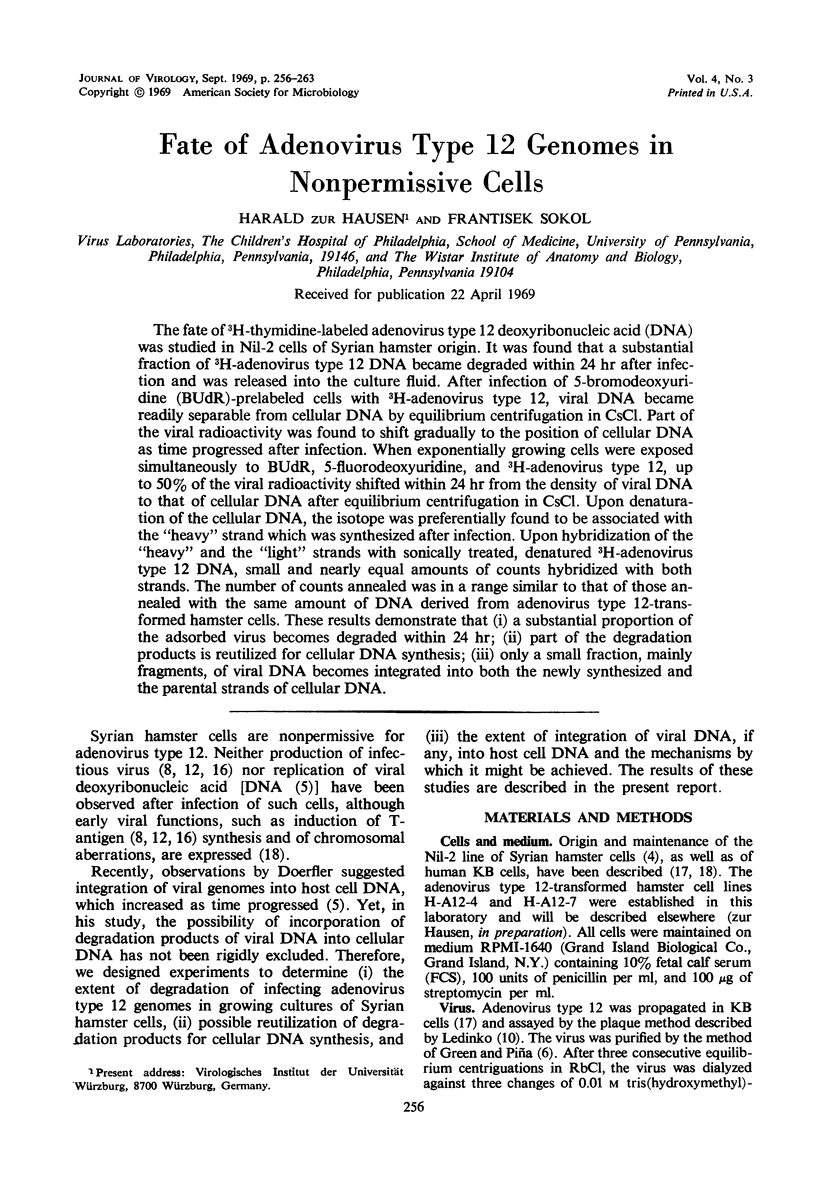
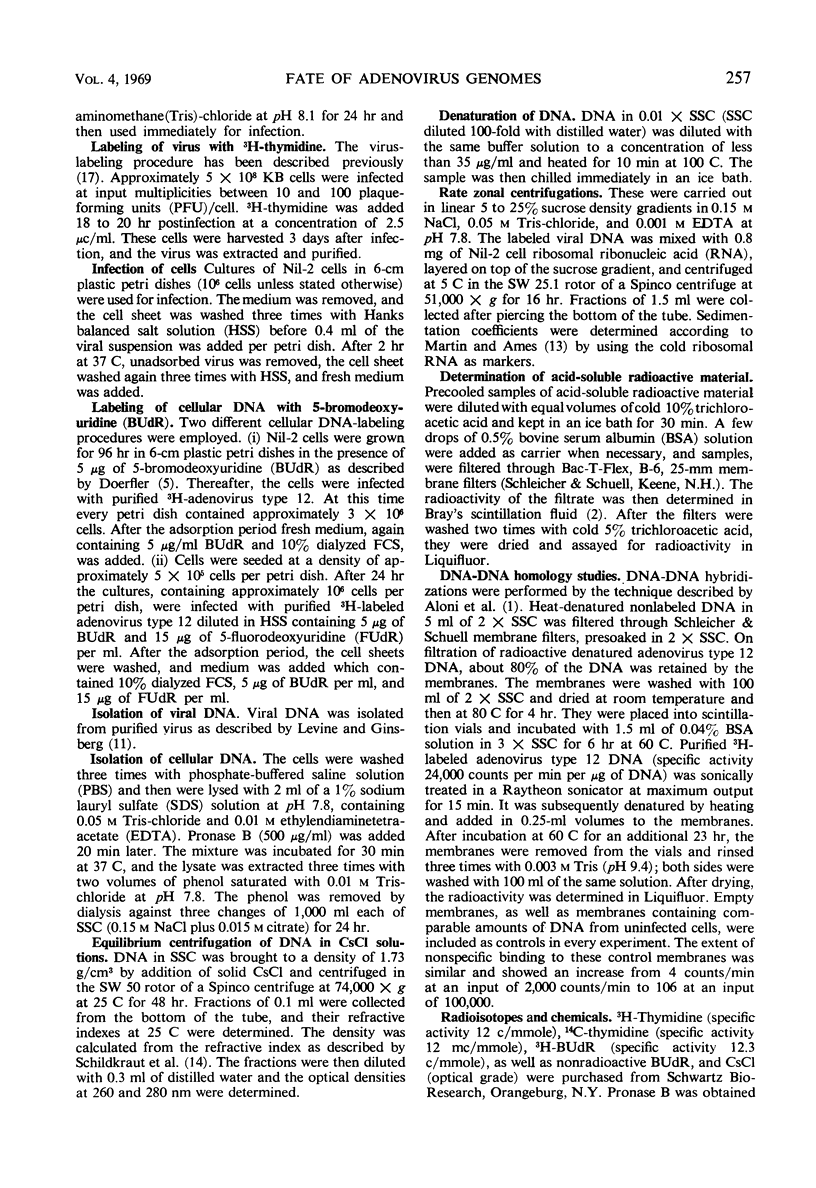
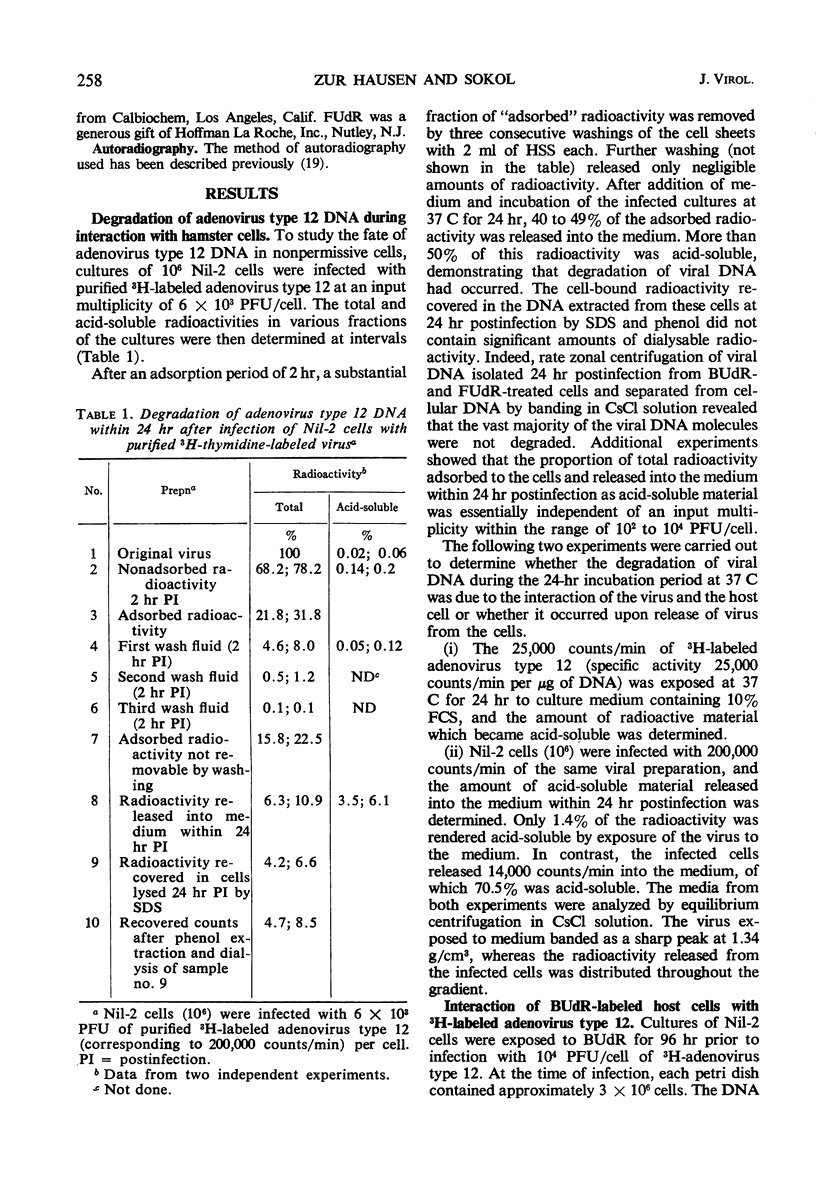
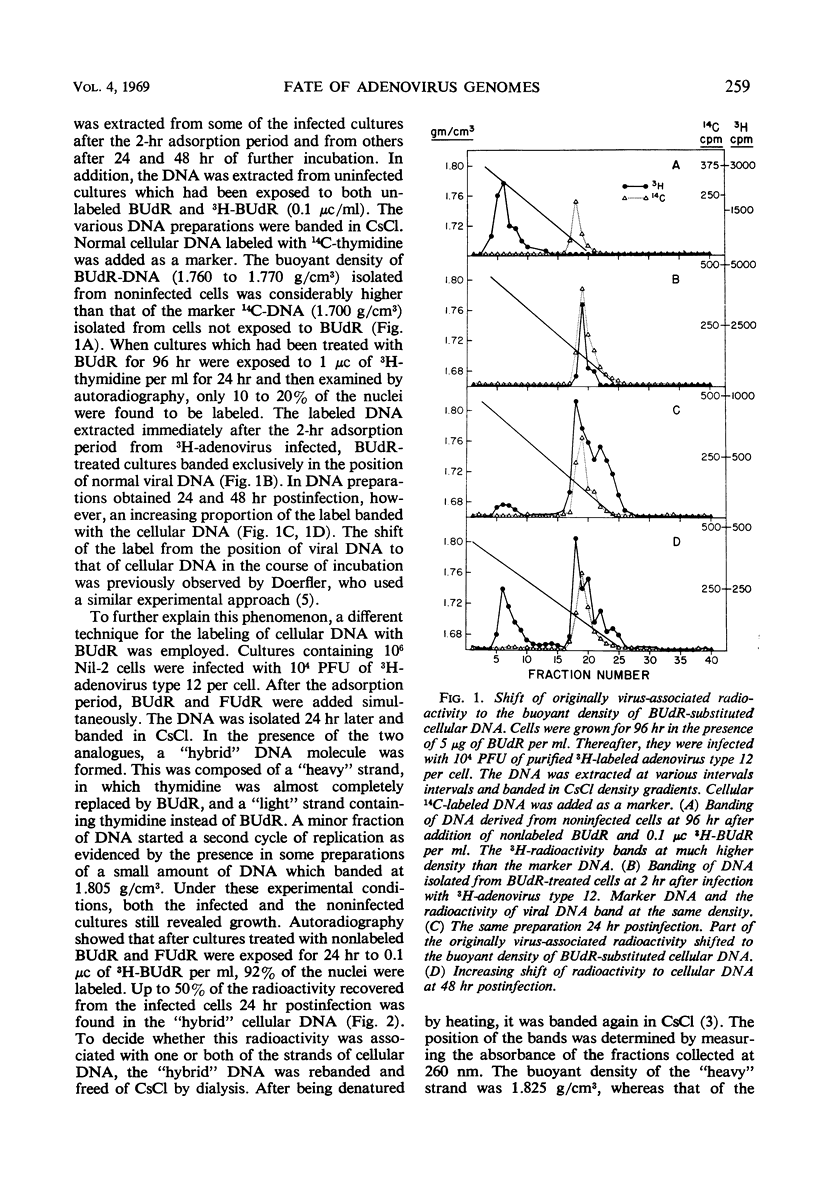
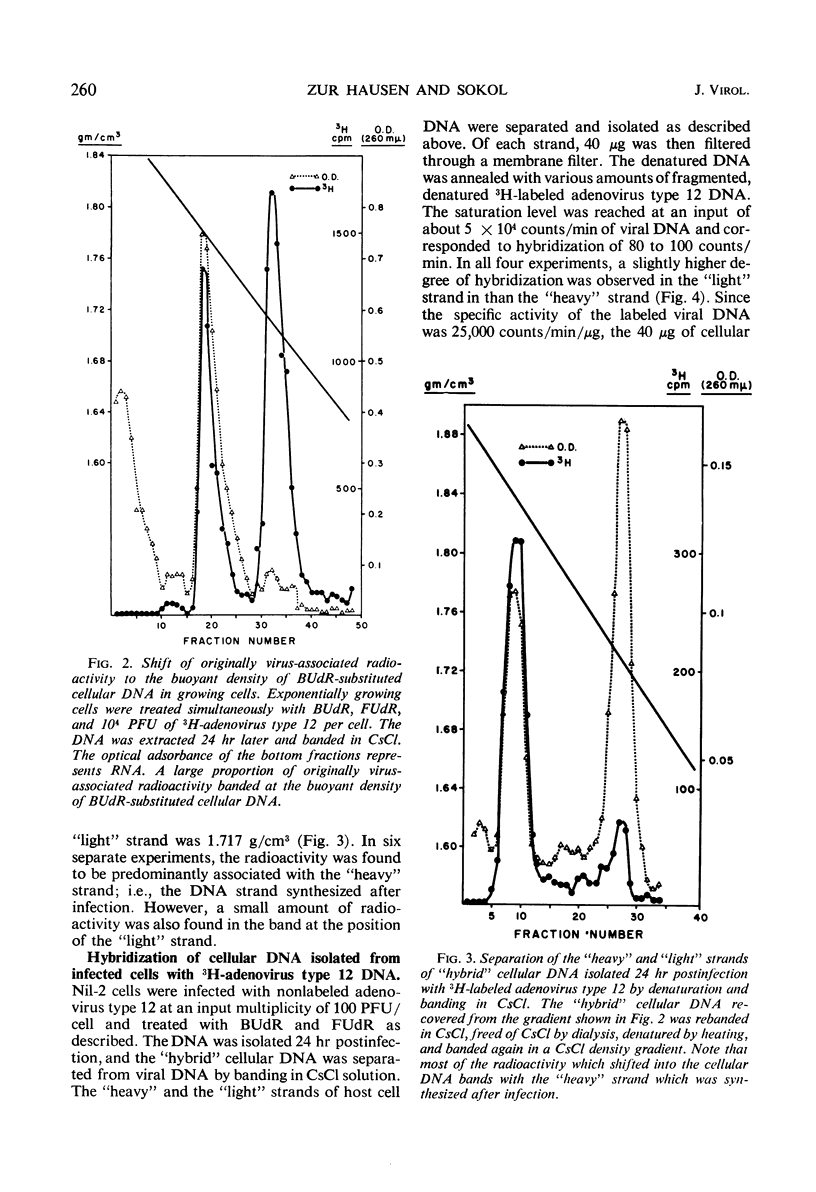
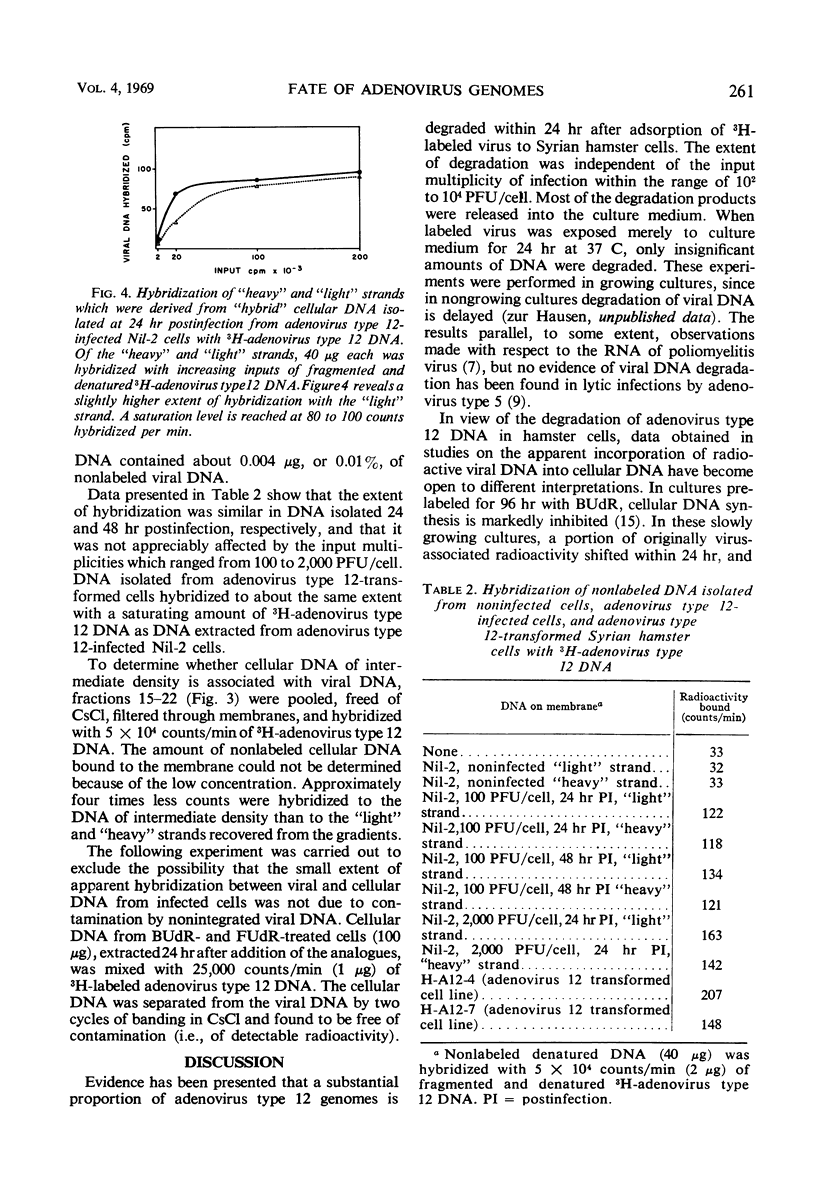
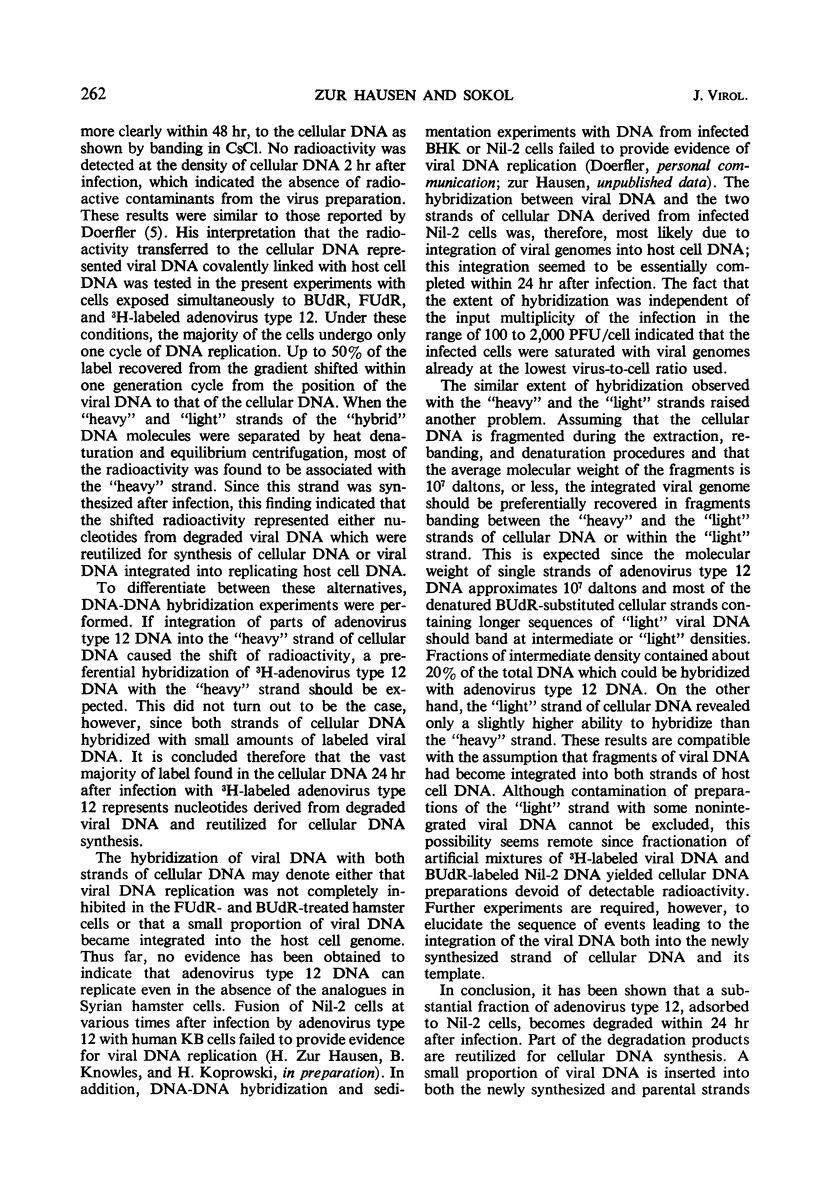
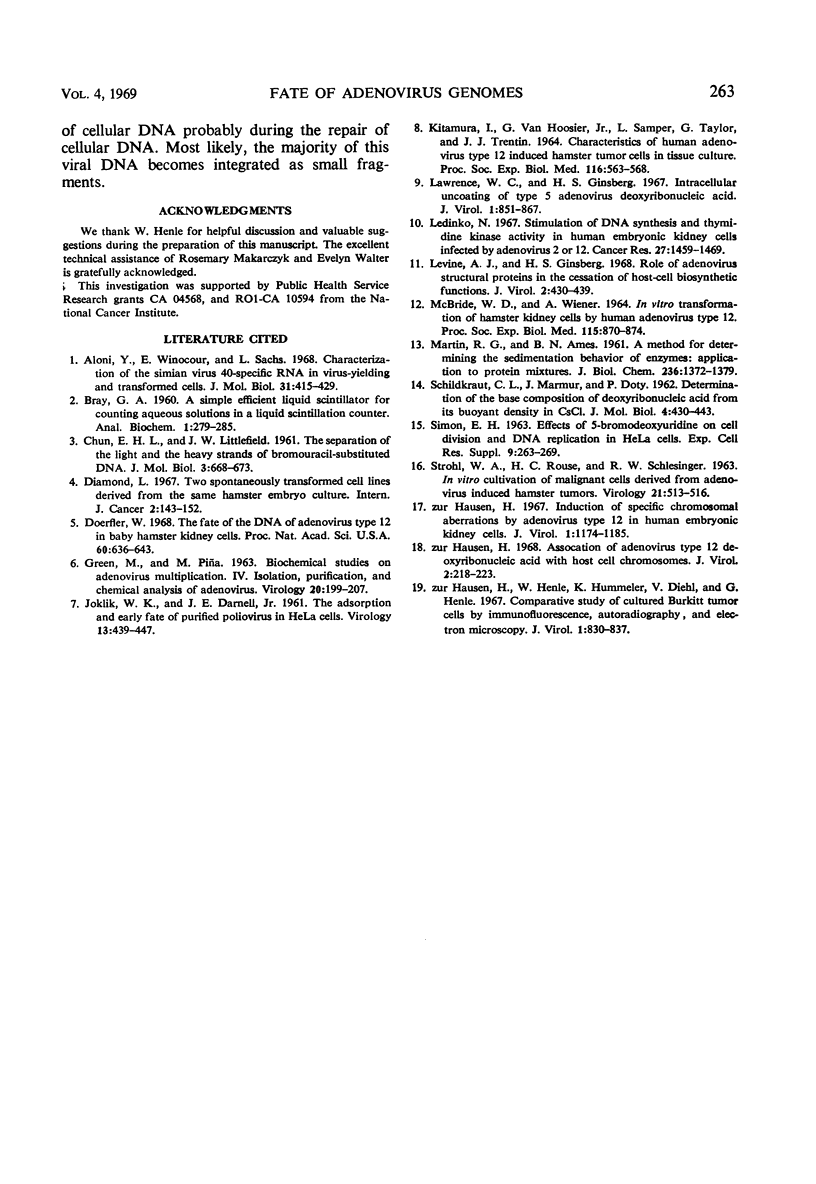
Selected References
These references are in PubMed. This may not be the complete list of references from this article.
- Aloni Y., Winocour E., Sachs L. Characterization of the simian virus 40-specific RNA in virus-yielding and transformed cells. J Mol Biol. 1968 Feb 14;31(3):415–429. doi: 10.1016/0022-2836(68)90418-x. [DOI] [PubMed] [Google Scholar]
- Diamond L. Two spontaneously transformed cell lines derived from the same hamster embryo culture. Int J Cancer. 1967 Mar 15;2(2):143–152. doi: 10.1002/ijc.2910020209. [DOI] [PubMed] [Google Scholar]
- Doerfler W. The fate of the DNA of adenovirus type 12 in baby hamster kidney cells. Proc Natl Acad Sci U S A. 1968 Jun;60(2):636–643. doi: 10.1073/pnas.60.2.636. [DOI] [PMC free article] [PubMed] [Google Scholar]
- GREEN M., PINA M. Biochemical studies on adenovirus multiplication. IV. Isolation, purification, and chemical analysis of adenovirus. Virology. 1963 May;20:199–207. doi: 10.1016/0042-6822(63)90157-0. [DOI] [PubMed] [Google Scholar]
- JOKLIK W. K., DARNELL J. E., Jr The adsorption and early fate of purified poliovirus in HeLa cells. Virology. 1961 Apr;13:439–447. doi: 10.1016/0042-6822(61)90275-6. [DOI] [PubMed] [Google Scholar]
- KITAMURA I., VAN HOOSIER G., Jr, SAMPER L., TAYLOR G., TRENTIN J. J. CHARACTERISTICS OF HUMAN ADENOVIRUS TYPE 12 INDUCED HAMSTER TUMOR CELLS IN TISSUE CULTURE. Proc Soc Exp Biol Med. 1964 Jul;116:563–568. doi: 10.3181/00379727-116-29307. [DOI] [PubMed] [Google Scholar]
- Lawrence W. C., Ginsberg H. S. Intracellular uncoating of type 5 adenovirus deoxyribonucleic acid. J Virol. 1967 Oct;1(5):851–867. doi: 10.1128/jvi.1.5.851-867.1967. [DOI] [PMC free article] [PubMed] [Google Scholar]
- Ledinko N. Stimulation of DNA synthesis and thymidine kinase activity in human embryonic kidney cells infected by Adenovirus 2 or 12. Cancer Res. 1967 Aug;27(8):1459–1469. [PubMed] [Google Scholar]
- Levine A. J., Ginsberg H. S. Role of adenovirus structural proteins in the cessation of host-cell biosynthetic functions. J Virol. 1968 May;2(5):430–439. doi: 10.1128/jvi.2.5.430-439.1968. [DOI] [PMC free article] [PubMed] [Google Scholar]
- MARTIN R. G., AMES B. N. A method for determining the sedimentation behavior of enzymes: application to protein mixtures. J Biol Chem. 1961 May;236:1372–1379. [PubMed] [Google Scholar]
- MCBRIDE W. D., WIENER A. IN VITRO TRANSFORMATION OF HAMSTER KIDNEY CELLS BY HUMAN ADENOVIRUS TYPE 12. Proc Soc Exp Biol Med. 1964 Apr;115:870–874. doi: 10.3181/00379727-115-29060. [DOI] [PubMed] [Google Scholar]
- SCHILDKRAUT C. L., MARMUR J., DOTY P. Determination of the base composition of deoxyribonucleic acid from its buoyant density in CsCl. J Mol Biol. 1962 Jun;4:430–443. doi: 10.1016/s0022-2836(62)80100-4. [DOI] [PubMed] [Google Scholar]
- SIMON E. H. EFFECTS OF 5-BROMODEOXYURIDINE ON CELL DIVISION AND DNA REPLICATION IN HELA CELLS. Exp Cell Res. 1963;24:SUPPL9–SUPPL9:269. [PubMed] [Google Scholar]
- Zur Hausen H. Association of adenovirus type 12 deoxyribonucleic acid with host cell chromosomes. J Virol. 1968 Mar;2(3):218–223. doi: 10.1128/jvi.2.3.218-223.1968. [DOI] [PMC free article] [PubMed] [Google Scholar]
- Zur Hausen H. Induction of specific chromosomal aberrations by adenovirus type 12 in human embryonic kidney cells. J Virol. 1967 Dec;1(6):1174–1185. doi: 10.1128/jvi.1.6.1174-1185.1967. [DOI] [PMC free article] [PubMed] [Google Scholar]
- zur Hausen H., Henle W., Hummeler K., Diehl V., Henle G. Comparative study of cultured Burkitt tumor cells by immunofluorescence, autoradiography, and electron microscopy. J Virol. 1967 Aug;1(4):830–837. doi: 10.1128/jvi.1.4.830-837.1967. [DOI] [PMC free article] [PubMed] [Google Scholar]


